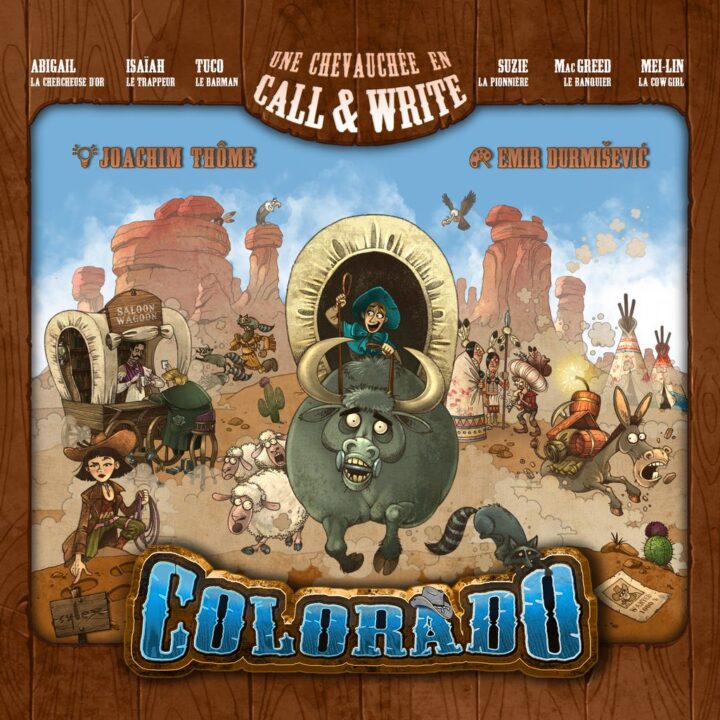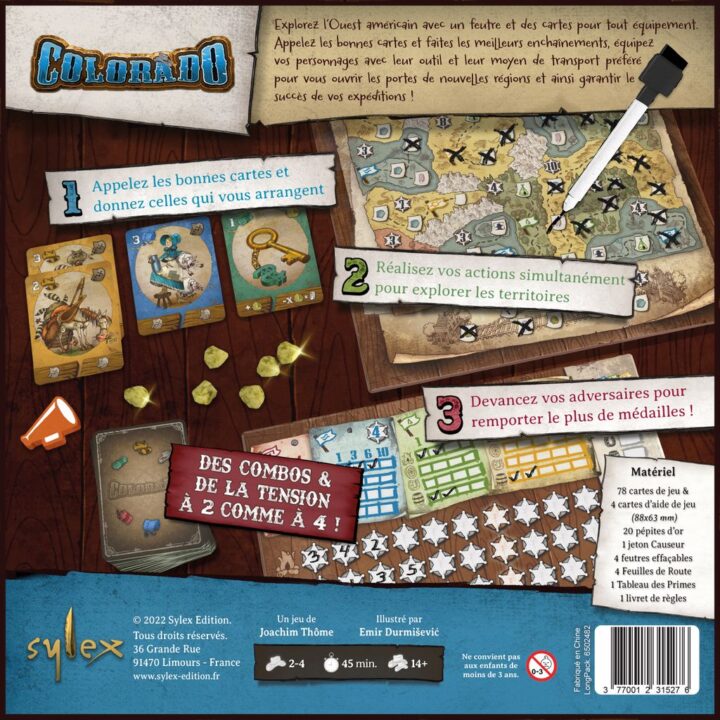Welcome! It’s time for another board game review, and this time I’m sharing my honest thoughts about a game that surprised my friends and me at game night. If you love games that are easy to teach, quick to play, and full of sneaky steals, you’ll want to keep reading. Of course, I’ll also let you know where this game falls flat—because not every game can be a five-star masterpiece. Grab some snacks and prepare for laughs, a little frustration, and all the tiny moments that make playing board games worth it. Here’s what happened when we played Colorado.
How It Plays
Setting up
Shuffle all the Colorado cards and give each player their starting hand. Put the rest in a draw pile in the middle. That’s it—no fiddly tokens, no confusing boards. Just cards and your hopes.
Gameplay
On your turn, you either draw a card and add it to any row, or you must pick up a row to keep. The trick? Each row can hold only three cards, so tough choices show up fast. You want sets of colors, but having too many colors means negative points. As people grab rows, the tension grows. Do you risk waiting for a better row, or do you panic and grab a pile of sadness?
Winning the game
Once all cards are picked up, add up your points. Only three colors score well; the rest count against you. The sneaky player with the most points wins. If you’re like me, you’ll find a way to lose with dignity and blame your friends for your misfortune.
Want to know more? Read our extensive strategy guide for Colorado.
Gameplay Mechanics and Fairness in Colorado
I brought out Colorado on game night, thinking it would settle our old argument about who’s the luckiest in our group. Spoiler: it didn’t! The basic action in Colorado is as simple as picking a card or taking a row. That sounds easy, right? Well, it is… on your first turn. But two rounds later, you’ll be sweating like a squirrel at a dog show. Every row you eye up has at least one card you want and two that spell doom for your score. The agony of decision, I tell you!
Colorado is all about collecting sets of colored cards, but here’s the rub: while collecting a couple colors scores you big, grabbing too many types is a shortcut to disaster. My friend Miguel tried hoarding every color, looking like a kid with too many scoops of ice cream, but trust me, the brain freeze hit hard once the points got totaled. I, on the other hand, tried focusing on just two colors. I realized quickly that the cards other people leave behind are usually there for a reason. If your opponents notice your strategy, they can (and will) force you into picking up bad cards. It’s a mean little system wrapped in some pastel packaging.
Now, fairness. Colorado tries to pass itself off as a game of clever choices, but don’t let it fool you. There’s a sneaky luck factor at play—cards come out at random, and sometimes you just can’t escape a raw deal. If you hate losing because the deck decided you should, this won’t be your new favorite. The mechanics are sharp, but the randomness stings. My group loves a clever game, but when luck decides who wins, tempers flare and snacks fly across the table.
Now, before you start flipping tables, let’s see if Colorado redeems itself with easy rules and a friendly learning curve in the next section. Spoiler: I’ve got stories!

Learning Curve and Rule Clarity in Colorado: Easy to Learn, Hard to Master?
When it comes to the learning curve, Colorado is about as friendly as a golden retriever meeting you at the door with your missing sock. The rules are short, only taking a few minutes to read. At our table, even my buddy Dave (who once played chess with the board upside down) picked up the game after the first round. You’ll find a small rulebook and, best of all, not a single sentence makes your eyes glaze over.
We played with a couple of first-timers last week—one was my neighbor’s cousin Wanda who claims she’s allergic to instructions. Even she was explaining the rules to others by the third round. The layout of the cards and the scoring rules are straightforward, so you won’t be scratching your head or secretly googling rules under the table.
Still, Colorado has just enough wrinkles to keep things interesting. While you won’t have to memorize pages of conditions or weird exceptions, the decisions you make feel important right from your first game. Some folks at my group thought scoring could use a quick summary card, especially when tallying up the points at the end. If your group suffers from short attention spans (or just the usual Friday night distractions), I’d recommend printing a cheat sheet.
So to sum it up: Colorado gets top marks for being accessible, and nobody stormed off in a rule-induced rage. Next, I’ll get into the spicy stuff—how much you’ll actually talk, bluff, and get in each other’s heads while playing. Trust me, you’ll want popcorn for the next section about player interaction and engagement!

How Much Do You Actually Yell At Your Friends In Colorado?
Let’s talk about the real reason we all play board games: the chance to outsmart (or shamelessly sabotage) our friends. Colorado may look like a chill card game with nice colors, but once you start, it’s more like ‘Card Shark Lagoon’. On your turn, you pick: do you add a card to a row or grab a set for your collection? Either way, you’re staring down suspicious faces across the table, wondering if someone is about to ruin your entire strategy or—worse—give you nothing but browns and yellows.
The tension ramps up as the rows fill. Do you take a half-decent row now, or play chicken and hope no one dumps a bad card on top? Colorado’s best moments come from those silent standoffs, where everyone pretends to be chill, but secretly prays someone ELSE bites first. It’s interactive without being loud, though I have seen a few fake fist shakes and dramatic groans. (I won’t name names, but it WAS me.)
The engagement level stays high, since you make a meaningful choice every single turn. No zoning out while waiting for others to finish—every card placed shifts the balance. At four or five players, things get spicy. The mood changes from friendly to ‘mildly vengeful.’ But it never feels mean, just good old board game banter.
If you crave clever moves and tiny moments of betrayal, Colorado delivers. Next, I’ll talk about how the actual cards feel in your hand—and why you may want to keep an eye on your snacky friends when it’s game night!
How Do Colorado’s Components and Game Length Stack Up?
I have played a lot of card games that fall apart after a few game nights. That is not the case with Colorado. The cards have a nice, snappy feel and can survive being bent, dropped in pizza, or even stolen by the family dog (ask me how I know…). The art is simple, but it’s cheery and does its job. Don’t expect fancy tokens or anything—Colorado comes as a card game and keeps it chill and practical. The box is a breeze to toss in a backpack, making it a go-to for pub nights or family trips.
Now, let’s talk about the length. The instructions say 30 minutes, and that’s pretty spot on—unless you play with my friend Steve, who gets lost in thought over every turn. For most people, though, Colorado finishes faster than a microwave burrito. There’s no player elimination either, so you stay in the fun till the bitter end (or sweet, if you win).
I noticed that the game length makes it perfect for a filler between bigger games or when you’re waiting for your always-late friend to show up. It never overstays its welcome, and you can even play a couple rounds without getting bored. Honestly, for the price and size, you get a lot of replay value packed into a small box.
So, do I recommend Colorado? Yes, unless you want bells and whistles or hate quick games. It’s fun, sturdy, and makes me smile—just watch out for sneaky dogs and Steve.
Conclusion
Colorado surprised me with how much sneaky fun it packs into a small box. It’s super quick to teach and play, and the cards are tough enough to survive your clumsiest friend (looking at you, Pete). Scoring can feel a bit mean, but that’s half the fun! It’s not the flashiest game, and luck sometimes trips you up, but for a fast filler or travel pick, it’s a winner. I wouldn’t bring it out for deep strategy nights, but when I want laid-back laughs and a little drama, Colorado does the trick. That wraps up my review—hope it helps you decide if you want this card game in your lineup!

